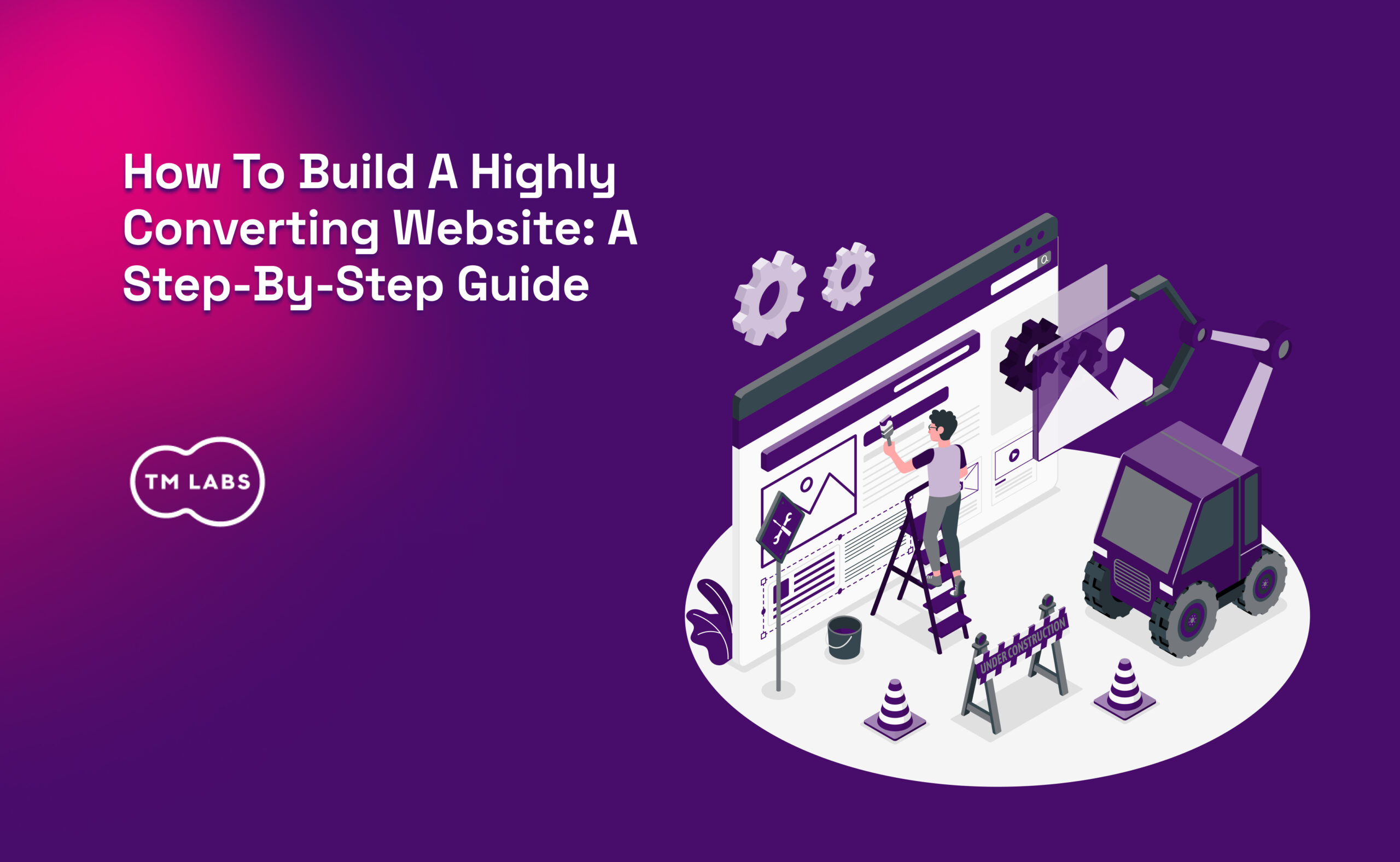
In 2023, a website isn’t just an online presence; it’s a powerful tool that can drive engagement, conversions, and ultimately, business success. Building a highly converting website requires a strategic approach that seamlessly combines design, user experience, and persuasive elements.
In this comprehensive guide, we’ll walk you through the steps to create a website that not only looks great but also converts visitors into loyal customers.

1. Lay the Foundation: Web Design and Development
Building a highly converting website starts with a solid foundation. Your website design should be visually appealing, professional, and aligned with your brand identity. Here are some key considerations for web design and development:
Attractive Design
Your website’s design plays a crucial role in creating a positive first impression on visitors. It should reflect your professionalism and attention to detail. Consider investing in professional web design or using high-quality themes that are easy to use and customize.
User-Centric Design
A user-centric design focuses on providing an optimal user experience. It involves designing intuitive navigation, clear calls-to-action, and easy-to-find information. Make sure your website is easy to navigate and that important pages, such as contact and product/service pages, are readily accessible.
Responsive Web Design
With the increasing use of mobile devices, it’s essential to have a responsive website that adapts to different screen sizes. This ensures a seamless user experience across devices and improves your website’s visibility in search engine results.
Trust Signals
Building trust is crucial for converting website visitors into customers. Incorporate trust signals into your website, such as customer testimonials, security badges, and social proof. These elements help establish credibility and instill confidence in your visitors.
Performance Optimization
A fast-loading website is vital for user satisfaction and conversion rates. Optimize your website’s performance by compressing images, minifying code, and leveraging caching techniques. Regularly monitor and optimize your website’s speed to ensure optimal performance.
2. Optimize for Conversion: Landing Page Optimization
A highly converting website requires effective landing page optimization. Landing pages are designed to capture visitor information and drive specific actions. Here are some key strategies for landing page optimization:
Clear and Compelling Headlines
Craft attention-grabbing headlines that clearly communicate the value proposition of your product or service. Use persuasive language and highlight the benefits of taking the desired action.
Engaging Visuals
Incorporate visually appealing images and videos that support your message and captivate your audience. Visual content can significantly impact engagement and conversion rates.
Persuasive Copywriting
Write persuasive and concise copy that clearly communicates the benefits of your product or service. Use compelling language, address pain points, and provide social proof to build trust and credibility.
Strong Call-to-Action
Design clear and compelling call-to-action buttons that prompt visitors to take the desired action. Use action-oriented language and ensure the button stands out on the page.
Form Optimization
Streamline your forms to capture the necessary information without overwhelming visitors. Use progressive profiling techniques to gather additional information over time and increase conversion rates.
3. Enhance User Experience: Website Conversion Best Practices
Creating a positive user experience is crucial for website conversion. A seamless and enjoyable user experience encourages visitors to stay on your site and take action. Here are some best practices to enhance user experience:
Intuitive Navigation
Design an intuitive navigation structure that allows visitors to easily find the information they need. Use clear and descriptive menu labels and provide breadcrumb navigation for easy exploration.
Readability and Accessibility
Ensure your website’s content is easy to read and accessible to all users. Use clear fonts, appropriate font sizes, and sufficient contrast between text and background colors. Provide alternative text for images to ensure accessibility for visually impaired users.
Personalization
Tailor the user experience based on individual preferences and behaviors. Use data and analytics to personalize content, product recommendations, and calls-to-action. Personalization can significantly improve engagement and conversion rates.
A/B Testing
Continuously test different elements of your website, such as headlines, visuals, and calls-to-action, to identify the best-performing variations. A/B testing allows you to make data-driven decisions and optimize your website for maximum conversion rates.
4. Measure and Iterate: Web Analytics and Iteration
Measuring and analyzing your website’s performance is essential for continuous improvement and optimization. Here are some key steps for web analytics and iteration:
Set Up Web Analytics
Implement a robust web analytics solution, such as Google Analytics, to track and measure key performance metrics. Set up goals and conversion tracking to monitor specific actions taken by visitors.
Analyze Key Metrics
Regularly analyze key metrics, such as conversion rates, bounce rates, time on site, and click-through rates. Identify areas for improvement and prioritize optimizations based on data insights.
User Behavior Analysis
Use user behavior analysis tools to gain insights into how visitors interact with your website. Heatmaps, clickmaps, and session recordings can provide valuable information about user engagement and behavior.
Conversion Funnel Optimization
Identify and optimize key stages of your conversion funnel. Analyze drop-off points and implement strategies to address potential barriers to conversion. Continuously test and iterate to improve conversion rates at each stage of the funnel.
Conclusion
By focusing on web design and development, landing page optimization, user experience enhancement, and analytics-driven iteration, you can create a website that effectively converts visitors into customers. Remember to always prioritize providing value to your audience and delivering an exceptional user experience. With these strategies and best practices, you can build a website that drives tangible business results and helps you achieve your goals.
Ready to turn your website into a conversion powerhouse? Contact us to learn how our web design and development services can help you achieve your goals.


